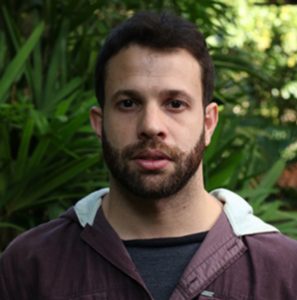About Marxan
How do you design a nature reserve that most effectively protects biodiversity given limited resources? Complex natural resource management problems can have millions of potential solutions- how do you choose one that meets all of your goals?
Marxan provides decision support to a range of conservation planning problems, including:
- the design of new reserve systems
- reporting on the performance of existing reserve systems
- developing multiple-use zoning plans for natural resource management
- What makes Marxan the most widely used conservation planning software in the world?
These features provide users with decision support to achieve an efficient allocation of resources across a range of different uses.
What you can do with Marxan:
- Identify areas that efficiently meet targets for a range of biodiversity features for minimal cost
- Use the principle of complementarity to select planning units which complement the conservation area network (the whole is more than the sum of its parts);
- Meet spatial requirements such as compactness of a reserve system;
- Include data on ecological processes, threats, and condition;
- Identify tradeoffs between conservation and socio-economic objectives; and
- Generate a number of very good solutions.
How has Marxan been used?
Marxan is the most widely used conservation planning tool supporting the design of marine and terrestrial reserves worldwide and is used by more than 1300 users in over 100 countries worldwide. Marxan software has contributed to several major conservation projects: it underpinned the rezoning of the Great Barrier Reef Marine Park in Australia and informed the design of marine protected areas for the Channel Islands in California.
Marxan can assist with the evaluation of existing reserve systems to identify gaps in biodiversity protection, identify areas to include in new reserve systems, and provide decision support by producing a number of different options that meet both socio-economic and conservation objectives. Marxan has also been used to support multiple-use zoning plans that balance the varied interests of stakeholders.
Why use systematic conservation planning tools like Marxan?
The practice of conservation planning has generally not been systematic and new reserves have often been located in places that do not contribute to the representation of biodiversity. Decisions about both on- and off- reserve conservation (if they are not to be ad hoc) should be guided by explicit goals, an understanding of current and future threats and priorities, and provide clear choices between alternative forms of management. Marxan incorporates best scientific information and makes the costs and benefits of alternative decisions clear, leading to more informed decision making. In addition, having multiple solutions to choose from helps in stakeholder driven decision making processes.
Is Marxan data hungry?
How much time you choose to invest in acquiring data can be highly variable and will largely depend on whether you are risk adverse to uncertainty or biases in your dataset. Marxan includes or excludes planning units in a conservation network based on information about the distribution of conservation features across your planning region. Marxan does not consider uncertainty in the data so the quality of what you put in is reflected in the results generated.
Marxan is the most widely used conservation planning tool in the world and is used by more than 1300 users in over 100 countries worldwide. The software has contributed to several major conservation projects; it underpinned the rezoning of the Great Barrier Reef Marine Park in Australia and informed the design of marine protected areas for the Channel Islands in California.
How was Marxan developed?
The software is primarily a product of Ian Ball’s PhD thesis (Ball 2000) that was supervised by and funded through Professor Hugh Possingham. The idea and problem formulation for Marxan was developed by Prof. Possingham to address urgent forest conservation planning problems in Australia.
In the initial stages, it was called SPEXAN, a combination of the words Spatially Explicit Annealing. At that time, the most substantial funding was from Environment Australia (EA). We owe much to Andrew Taplin for this initial support.
Marxan was developed as a modified version of SPEXAN to meet the needs of the Great Barrier Reef Marine Planning Authority (GBRMPA) in their 2003-2004 rezoning plans. GBRMPA provided partial support for the modification. Marxan also was used by Adam Lewis and Suzanne Slegers to provide decision support for the GBR representative areas program. Along with the The Nature Conservancy's ecoregional planning processes, these represent some of the largest applications of Marxan/SPEXAN.
Meet the team

Professor Hugh Possingham, FAA
Queensland Government /The University of Queensland

Jennifer McGowan, PhD
The Nature Conservancy/Yale University

Diego Juffe Bignoli
Freelance Biodiversity Expert/DICE, University of Kent

Brooke Williams
University of Queensland/IIS-AU
The Marxan Advisory committee
Earth’s surface is finite, meaning that every decision we make about lands and waters must be made as effectively as possible. Under emerging international and domestic climate and biodiversity commitments, nations must build marine, freshwater, and terrestrial conservation plans. This requires balancing biodiversity conservation with the growing demands for energy, infrastructure, food and economic recovery. To ensure Marxan is ready to assist these needs now and in the future, we are proud to announce the Marxan Advisory Committee. Our advisors are world leaders in conservation planning theory, practice and achieving conservation outcomes on the ground. Their research and commitment to biodiversity conservation strongly represent Marxan’s core values and principles of free, open, fair and equitable access to decision-support tools.

Associate Professor Maria Beger
University of Leeds, United Kingdom

Professor Bob Smith
University of Kent, United Kingdom

Dr Eddie Game
The Nature Conservancy, United States/Australia

Dr Hedley Grantham
Wildlife Conservation Society, United States/Australia

Professor Mandy Lombard
Nelson Mandela University, South Africa

Professor Peter Arcese
University British Columbia, Canada

Professor Oscar Venter
University of Northern British Columbia, Canada

Professor Carlo Rondinini
Sapienza University, Italy

Dr Renato Crouzeilles
International Institute for Sustainability, Brazil/Australia

Dr Piero Visconti
International Institute for Applied Systems Analysis, Austria

Dr Jeff Ardron
Oceans and Natural Resources

Dr Lera Miles
UN Environment World Conservation Monitoring Centre
